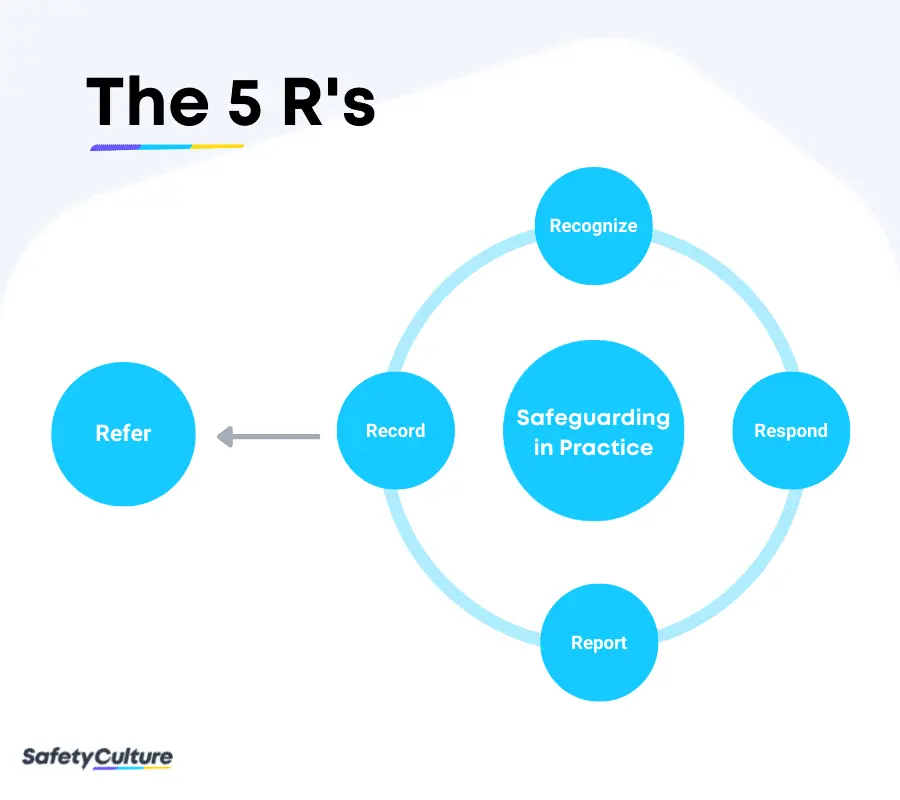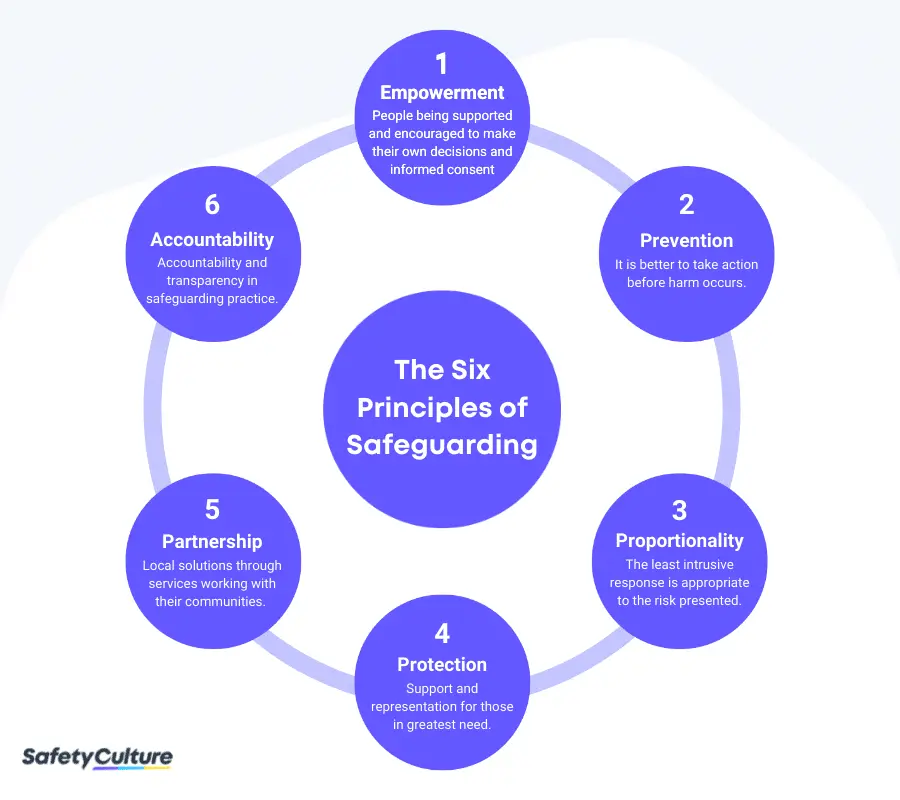What is Safeguarding?
The welfare of children and young people is vital for a safe environment. The development and implementation of appropriate safeguarding policies and procedures ensure that children are safe from adults and other children who may constitute harm.
The Social Care Institute for Excellence (SCIE) defined safeguarding as, “protecting a person’s rights to live in safety and free from abuse and neglect.” In the Safeguarding Children Report published in 2002 by the Department of Health, the term was identified to mean:
- “agencies working with children, young people and their families take all reasonable measures to ensure that the risks of harm to children’s welfare are minimised; and
- Where there are concerns about children and young people’s welfare, all agencies take all appropriate actions to address those concerns, working to agreed local policies and procedures in full partnership with other local agencies.”
According to the Children Acts of 1989 and 2004, children or a child is defined as someone under the age of 18 or someone who has not yet reached the age of majority. Young people are defined as those under the age of 18 who have left school early.
The National Society for the Prevention of Cruelty to Children (NSPCC) defined safeguarding in children based on the actions that it involves. They are as follows:
- Protecting children from abuse and maltreatment
- Preventing harm to children’s health or development
- Ensuring children grow up with the provision of safe and effective care
- Taking action to enable all children and young people to have the best outcomes.
5 Types of Abuse
The Working Together to Safeguard Children 2015 defined child abuse as:
“A form of maltreatment of a child. Somebody may abuse or neglect a child by inflicting harm, or by failing to act to prevent harm. Children may be abused in a family or in an institutional or community setting by those known to them or, more rarely, by others (e.g. via the internet). They may be abused by an adult or adults, or another child or children.”
There are many other types of abuse which professionals and practitioners have to be aware of and abuse can happen to anyone of any age. The 5 main types of abuse as given by SCIE are as follows:
- Physical abuse—pertains to physical harm done to a child’s body, such as bruises, wounds, burns, or broken bones, as well as over-medicating, shaking, or beating them, which can have life-altering implications in infants and children.
- Sexual abuse—pertains to the sexual actions performed before the age of consent, which is 16 years old in the UK.
- Emotional/psychological abuse—pertains to emotional mistreatment such as intentionally threatening, humiliating, isolating, or ignoring a child.
- Neglect—pertains to the persistent failure to meet a child’s basic physical and/or psychological needs.
- Disguised compliance—This pertains to the following:
- failure to provide basic necessities such as food, clothing, and housing;
- failure to to protect a child from physical and emotional harm or danger;
- failure to ensure adequate supervision; and
- failure to give appropriate medical care or treatment.
If you have concerns about a child or a young person you are entrusted with, you should speak with those who are responsible for their protection or report it to a designated officer for safeguarding when you notice signs of abuse.
Duty to Protect Children
While everyone has the responsibility to protect the children, there are people who have specifically been given the responsibility of safeguarding them. Working Together to Safeguard Children (Department for Education, 2018) states that they are:
- Everyone who works with children—examples: teachers or sport coaches
- Everyone who comes into contact with children and their families—examples: caregivers and carers
Every organization that works with children must have a designated person in charge of child protection and safety. This person is called a nominated child protection lead. NSPCC has specified them as:
- Designated Safeguarding Officer (DSO)
- Designated Safeguarding Lead (DSL)
- “Named person” for child protection
- Child protection officer
- Child protection lead
- Safeguarding or child protection coordinator
These individuals should be educated on how to recognize indications of suspected abuse and how, where, and to whom to report their suspicions. The Children Act 2004 also provided a legal responsibility on certain organizations, agencies, and individuals to cooperate in order to safeguard and promote the welfare of children, as set out in Section 11. They include the following:
- Children’s services authorities
- Local authorities and district councils
- National Health Service (NHS) organizations and agencies and the independent sector, including NHS England and clinical commissioning groups, NHS Trusts, NHS
- Foundation Trusts, and General Practitioners
- Police authorities
- Probation services (e.g., National Probation Service)
- Youth Offending Teams/Services (YOTs)
Workers in these organizations who fail to report suspected cases of abuse or neglect may face disciplinary consequences, but they are not yet subject to prosecution.
5 R’s of Safeguarding
To ensure that safeguarding is done correctly, it’s important to follow the 5 R’s of safeguarding, as stated in the Safeguarding Policy (October 2021) provided by Performance Through People:

5 R’s of Safeguarding
- Recognize—pertains to the ability to recognise behavior that may show signs and symptoms of abuse.
- Response—pertains to the appropriate response when there are concerns about a child’s safety or wellbeing.
- Report—pertains to reporting concerns of abuse to designated officers, who will then be responsible for taking further action.
- Record—pertains to precise recording of the alleged abuse with the exact words and accurate quotations of the complainant. This is done by a DSO.
- Refer—pertains to the referral of DSO to authorities to carry out an investigation to examine the allegations, or making a child protection referral to the local authority.
6 Principles of Safeguarding

6 Principles of Safeguarding
In 2011, the Department of Health introduced six principles that apply to all health and care settings, both for children and vulnerable adults. These principles are now set out by Care Act of 2014:
- Empowerment—ensuring that people are being supported and encouraged to make their own decisions and informed consent
- Prevention—taking action before harm develops in the first place
- Proportionality—ensuring you apply preventative measures
- Protection—supporting and representing those in greatest need
- Partnership—partnering with local agencies and organizations to prevent, recognize, and report suspected incidents of neglect and abuse
- Accountability—being transparent and accountable for all of the decisions and changes that you have made
Create Your Own Safeguarding Inspection Checklist
Eliminate manual tasks and streamline your operations.
Get started for FREEExamples
NSPCC has given practice examples as guides for safeguarding children. These scenarios are instances where safeguarding is crucial to protect the children and also the people working with them. Below are some of them:
- One-to-one working (e.g., counsellors)
- Event trips where an adult and children will share a space together for sleeping
- Holding an event where there will be parents or other adult volunteers
- A center that holds activities for children and is regularly visited by a repairman for maintenance purposes



